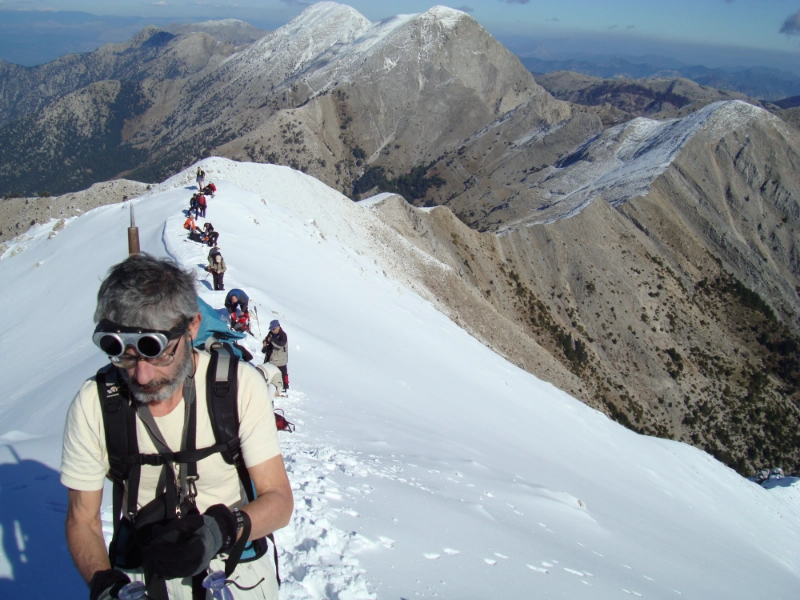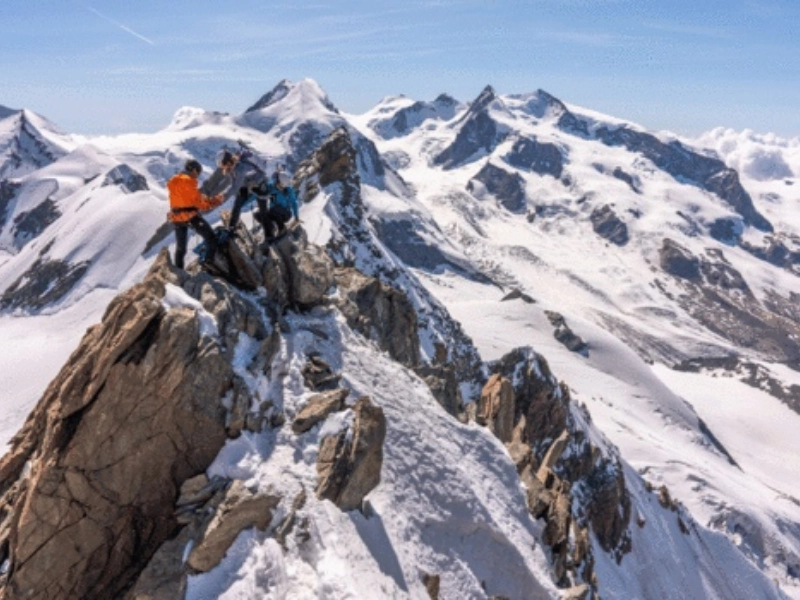Although mountaineering is a risky and challenging sport, it can also be a lifelong pastime that aids in the development of many different abilities. It calls for extensive training and unwavering experience. It is very wonderful to experience the rush of conquering challenging climbs and reaching the summit. It's also a fantastic method to increase your mental toughness and level of physical conditioning.
 Ascending a mountain is the aim of mountaineering, typically with the use of specialized climbing equipment. It is regarded as an elite activity because of the high stakes and challenging circumstances. There are mountaineers everywhere in the world, and they are often very competent and experienced. On wilderness excursions that combine climbing with backpacking and camping, they encounter difficult physical and psychological circumstances at high altitudes.
Hiking on trails and sport climbing near civilization are not the same as mountaineering; mountaineering demands more agility and technical climbing skills in addition to a larger time and energy commitment. Climbers must overcome not only the physical and technical difficulties but also the risk of falling into crevasses, avalanches, and rockfalls. They may also experience disappointment if erratic mountain weather causes them to postpone or reverse their attempt to reach the peak. Even with these dangers, there can be great satisfaction in standing on a rocky or snowy mountain.
Ascending a mountain is the aim of mountaineering, typically with the use of specialized climbing equipment. It is regarded as an elite activity because of the high stakes and challenging circumstances. There are mountaineers everywhere in the world, and they are often very competent and experienced. On wilderness excursions that combine climbing with backpacking and camping, they encounter difficult physical and psychological circumstances at high altitudes.
Hiking on trails and sport climbing near civilization are not the same as mountaineering; mountaineering demands more agility and technical climbing skills in addition to a larger time and energy commitment. Climbers must overcome not only the physical and technical difficulties but also the risk of falling into crevasses, avalanches, and rockfalls. They may also experience disappointment if erratic mountain weather causes them to postpone or reverse their attempt to reach the peak. Even with these dangers, there can be great satisfaction in standing on a rocky or snowy mountain.
 For mountaineers, nothing beats the rush of reaching the top of a mountain. For most, though, it's not their primary objective. Long-term objectives that climbers may set include finishing a particular "lifetime project" or raising their own bar by pushing themselves to reach a particular grade. These objectives are crucial because they offer consistent drive.
Mountaineers frequently spend days or weeks ascending the mountain slowly while carrying a large burden on their backs. Both physical and mental stamina are needed for this. The actual travel itself may be immensely satisfying, particularly if the weather improves and the climber can watch the terrain open up in front of them.
Mountaineers also need to be adept at navigating hazardous areas like crevasses and whiteouts. Navigating with a map and compass correctly is essential for finding the optimal path. Mountaineers also need to factor in the length of the climb in order to make sure they have enough time to do it safely.
For mountaineers, nothing beats the rush of reaching the top of a mountain. For most, though, it's not their primary objective. Long-term objectives that climbers may set include finishing a particular "lifetime project" or raising their own bar by pushing themselves to reach a particular grade. These objectives are crucial because they offer consistent drive.
Mountaineers frequently spend days or weeks ascending the mountain slowly while carrying a large burden on their backs. Both physical and mental stamina are needed for this. The actual travel itself may be immensely satisfying, particularly if the weather improves and the climber can watch the terrain open up in front of them.
Mountaineers also need to be adept at navigating hazardous areas like crevasses and whiteouts. Navigating with a map and compass correctly is essential for finding the optimal path. Mountaineers also need to factor in the length of the climb in order to make sure they have enough time to do it safely.
 Most mountaineers aim to reach a mountain's peak. For this reason, the majority of people practice really hard to participate in this activity because it is an immensely satisfying accomplishment. However, there are challenges involved in climbing to the summit. Climbing a hill for 12–14 hours a day while carrying a heavy load can be mentally and physically taxing. To this is added the fact that anyone who is ill-prepared for a high-altitude trek could end up dead.
It is crucial to start simple and work your way up to more difficult climbs and routes because of this. It is essential to become familiar with movement, equipment, fitness, and mountain weather and circumstances. Understanding how to appropriately acclimate to the altitude is also crucial. To get something right, it takes time and careful planning; it is not something that can be completed quickly. It is easy to overlook the impact this might have on your success and safety on a challenging climb.
Most mountaineers aim to reach a mountain's peak. For this reason, the majority of people practice really hard to participate in this activity because it is an immensely satisfying accomplishment. However, there are challenges involved in climbing to the summit. Climbing a hill for 12–14 hours a day while carrying a heavy load can be mentally and physically taxing. To this is added the fact that anyone who is ill-prepared for a high-altitude trek could end up dead.
It is crucial to start simple and work your way up to more difficult climbs and routes because of this. It is essential to become familiar with movement, equipment, fitness, and mountain weather and circumstances. Understanding how to appropriately acclimate to the altitude is also crucial. To get something right, it takes time and careful planning; it is not something that can be completed quickly. It is easy to overlook the impact this might have on your success and safety on a challenging climb.
 It could be time to give mountaineering a shot if you find yourself drawn to snow-capped mountains and envisioning more ambitious objectives than following a well-trod path. This is also referred to as alpinism, and it entails utilizing an ice axe, crampons, and cams to climb large mountains in snowy, icy weather.
Being well-prepared is essential while mountaineering. It calls for a different kind of thinking than sport climbing or camping, and it can be perilous. You have to be able to read the terrain, find your way around crevasses, and handle the unpredictable mountain weather.
In contrast to many other extreme activities, climbing provides a special chance to establish objectives for yourself that are quantifiable and long-term achievable. You can set these objectives to be as high or low as you desire, but they must be smart. This means that they should have a specific beginning and ending date because vague objectives don't spur you on to put in the necessary effort.
It could be time to give mountaineering a shot if you find yourself drawn to snow-capped mountains and envisioning more ambitious objectives than following a well-trod path. This is also referred to as alpinism, and it entails utilizing an ice axe, crampons, and cams to climb large mountains in snowy, icy weather.
Being well-prepared is essential while mountaineering. It calls for a different kind of thinking than sport climbing or camping, and it can be perilous. You have to be able to read the terrain, find your way around crevasses, and handle the unpredictable mountain weather.
In contrast to many other extreme activities, climbing provides a special chance to establish objectives for yourself that are quantifiable and long-term achievable. You can set these objectives to be as high or low as you desire, but they must be smart. This means that they should have a specific beginning and ending date because vague objectives don't spur you on to put in the necessary effort.